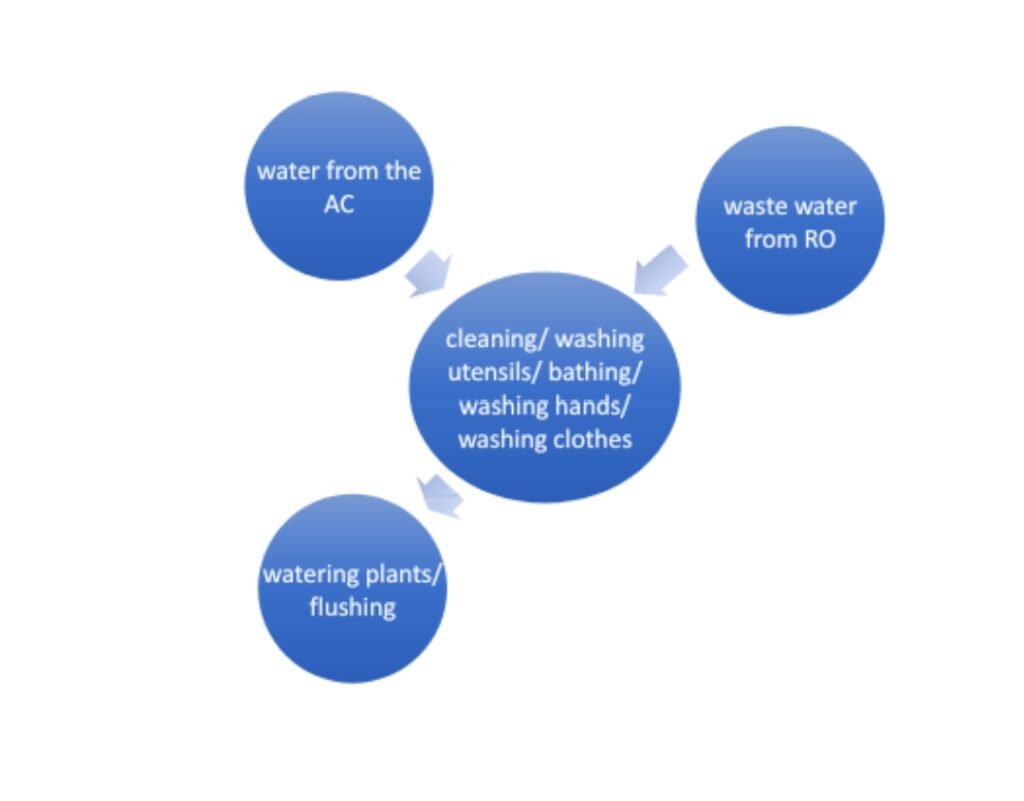“We are living on this planet as if we have another one to go to.”
-Terri Swearingen
Assume the pandemic is no longer present and you are outside on a sunny day. Sweat-soaked body, parched throat, heavy backpack on shoulders, empty water bottle, tired, dizzy, and breathless, and you’re on your way home. When you go home, you grab a glass, pour some water, and take your first sip. That is precisely why we say that water is life.
Quick question. Have you ever been to a water park? Or do you intend to do so in the future? Or do you want your children to enjoy such a memorable experience? Or have you ever wished for a home with a swimming pool? I’m sorry to break it to you, but that will not be achievable. Considering the tendencies, the end of life in thirst is a possibility. It is not a factual exaggeration. It is, in fact, the case. “Every day, over 700 children under 5 die from diarrhea linked to inadequate water, sanitation and hygiene”- UNICEF.
We all read predictions related to climate change and water crisis, but tend to ignore them because ‘kya hi kar sakte hai?’ We even hear people saying, ‘jab kuch hoga tab dekhlenge’ and ‘akele kya hi kar lenge.’ If we take these predictions seriously… it is frightening. Allow me to explain. According to a 2014 United Nations Report, by 2025, 1.8 billion people would be living in nations or areas with absolute water shortage, and two-thirds of the world’s population may be living in water-stressed situations. This is approximately the time when I would be graduating from college. According to a 2013 estimate by the Global Water Institute, 700 million people globally might be displaced by severe water scarcity by 2030. According to UNICEF, by 2040, nearly one in every four children would be living in places with extremely severe water stress. According to a UN report on water conservation issued in March 2017, the Indian subcontinent would bear the brunt of the water crisis owing to its unique geographical location in South Asia, and India will be at the epicenter of this struggle and almost all of India will be without drinkable water by 2040. Determine my and your ages accordingly. As you can see, it’s not too far. It’s leading up with each stroke of the clock.
To be realistic, it isn’t getting any nearer. No, I don’t mean you shouldn’t be concerned. I mean. Be afraid, for it has already arrived. UNICEF said, “Around 74% of natural disasters between 2001 and 2018 were water-related, including droughts and floods. The frequency and intensity of such events are only expected to increase with climate change. Today, 1.42 billion people– including 450 million children– live in areas of high or extremely high-water vulnerability.” Earth, on the other hand, would remain a blue planet. If you’re satisfied with this information, let me tell you something more. Rising sea levels are forcing freshwater to become salty, jeopardizing the water resources on which millions rely.
These were not the only facts. There are numerous predictions, facts, statistics, and news stories on the internet urging people to ‘save the blue planet.’ I’m not a fan of the link of schooling that requires children to create posters about saving the planet, wasting a lot of paper, instead of really doing something to help preserve the planet. This is not a lecture to tell you what you need to know since education is intended to accomplish that. Without a doubt, it has failed. This article serves as yet another reminder, adding to the many already in existence. Remind yourself that we are the first generation to suffer a water problem and the last to fix it. R Reminder that we don’t have to wait for wells to go dry to realize how precious water is. A reminder that if we continue in this manner, our children and grandchildren will condemn us. A reminder that water is the source of all life on Earth. A reminder that the last drop won’t last forever.

Now, let us stop being part of the problem and start being part of the solution. There are a few really basic measures that can assist us in living the life of our dreams. Begin to use less water on a daily basis, as you are currently squandering liters of water for no apparent reason. This diagram is a simple example of what you can do to help prevent our future from becoming drier. You may educate and establish yourself in a variety of methods. But let’s start somewhere, right?
Till the time everyone is thinking that they can’t do it alone, other millions of gallons are wasted. If you think your lone efforts won’t do any good, let me tell you that someone is watching us right now, learning from our actions, whether they are our friends, our haters, our siblings, younger people, older people, people who take us as examples, but someone is always watching. You have the ability to both be and bring about change. At the very least, we won’t be contributing to the problem, but to the solution. So, come on, let’s save a drop, let’s save a tomorrow, let’s save a generation.
REFERENCES
- https://www.unwater.org/water-facts/scarcity/
- https://www.unicef.org/stories/water-and-climate-change-10-things-you-should-know\
- https://www.seametrics.com/blog/global-water-crisis-facts/
- https://www.youtube.com/watch?v=C65iqOSCZOY&t=60s
This article has been written by Harmanpreet, 2nd Year